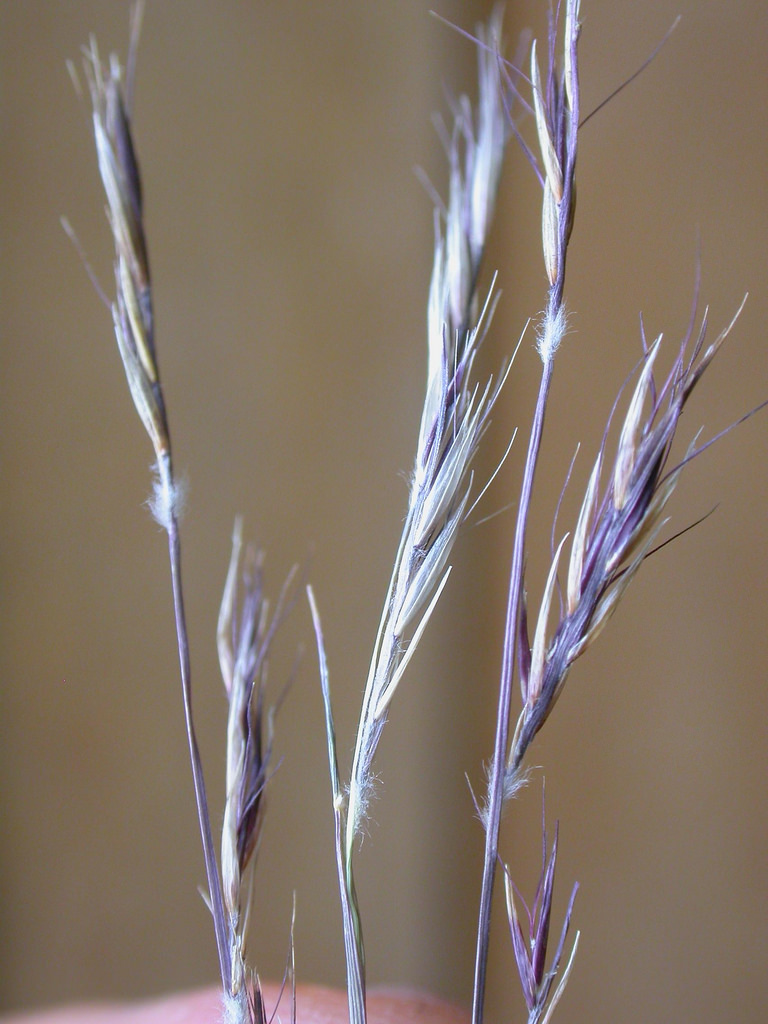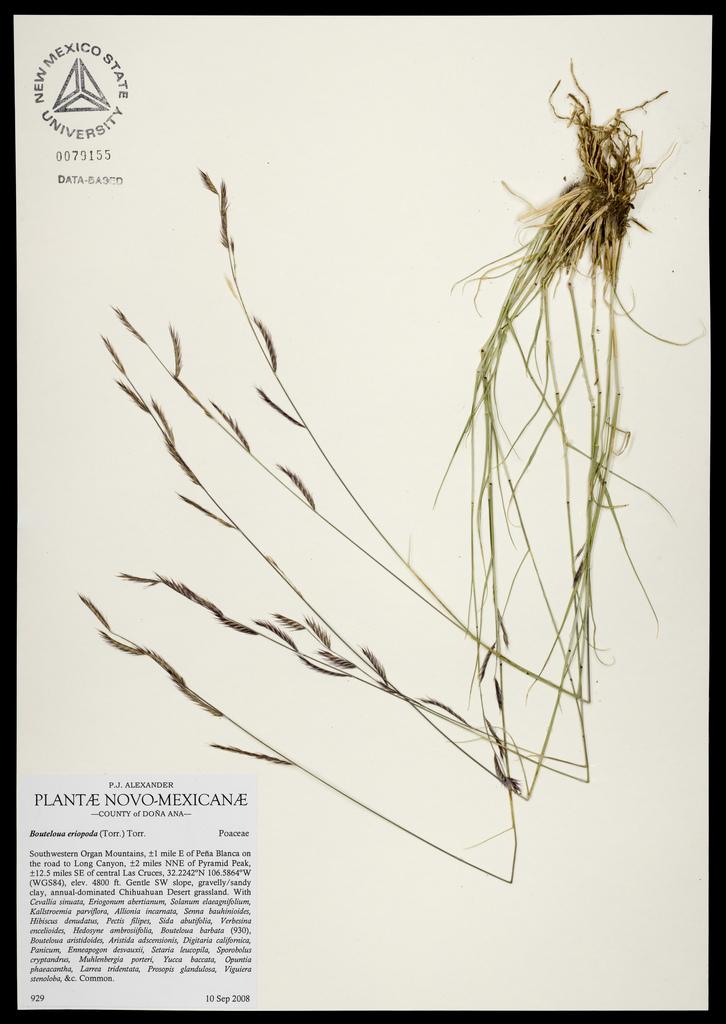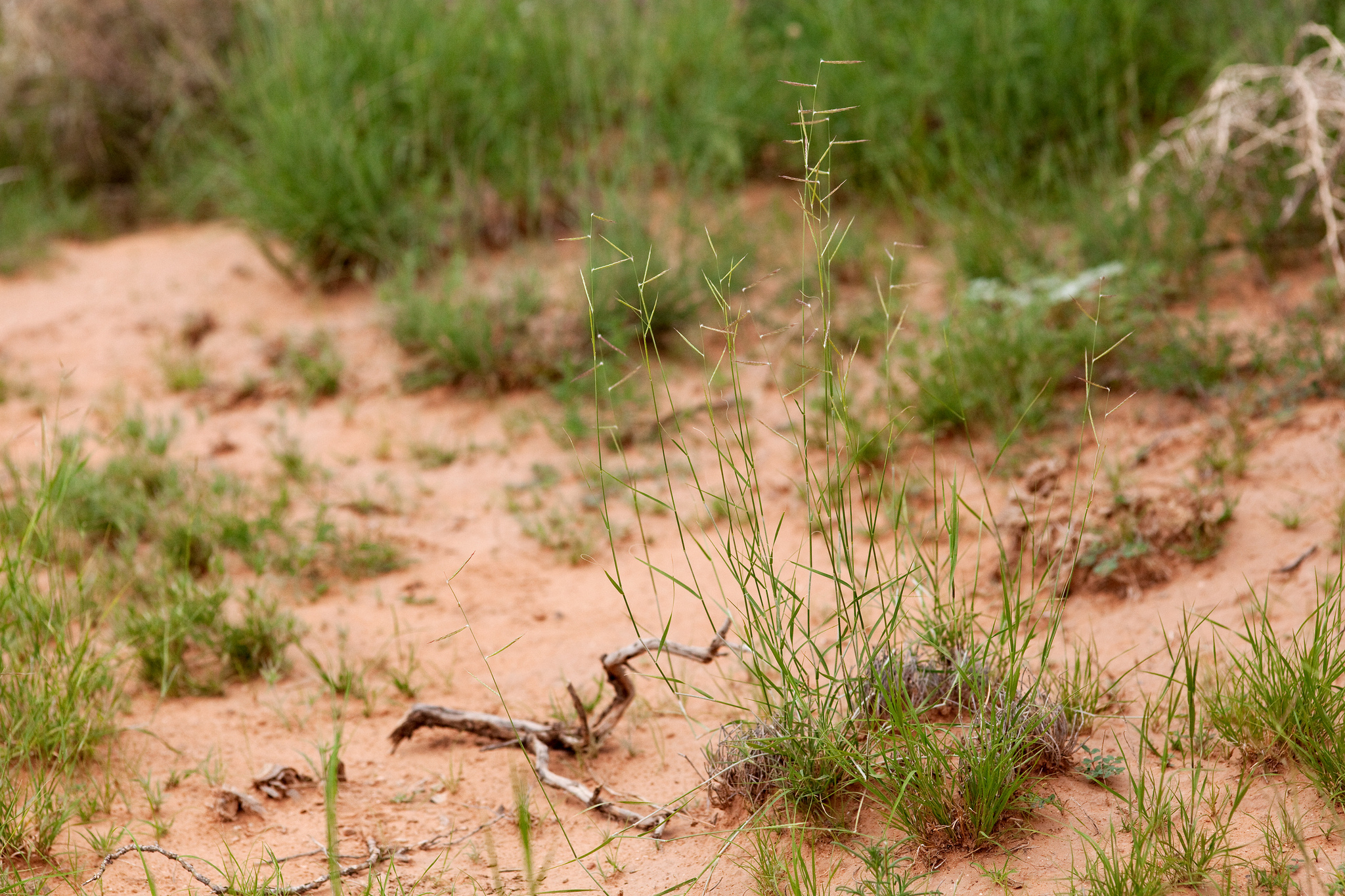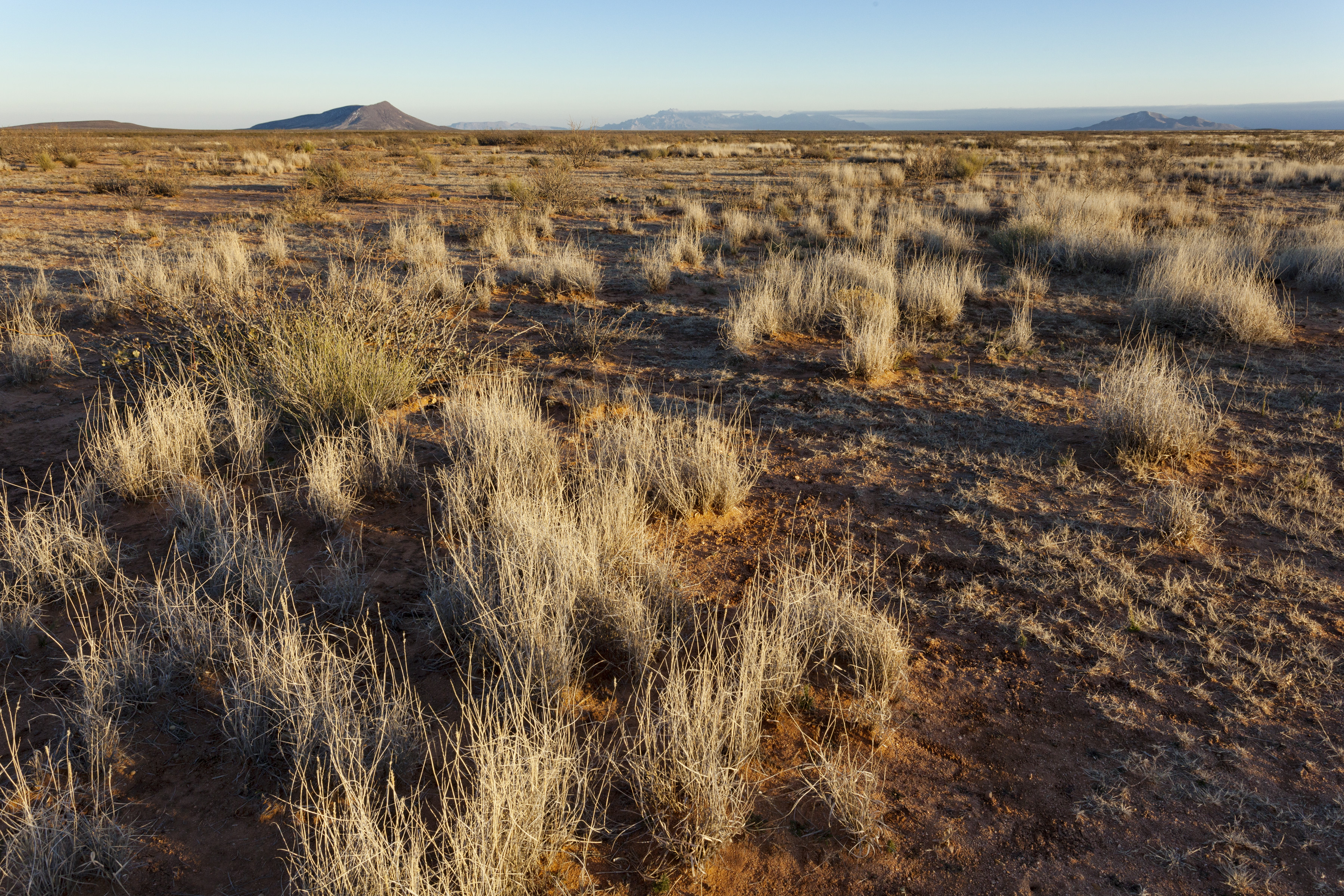Selected Plants of Navajo Rangelands
Grama, black
Tł’ohnást’ąsłizhiní

Black grama is a native, warm-season, perennial grass 10-20 inches tall. It has crooked wooly stems with narrow leaves, less than 1/8 inch wide, inrolled and wavy. Seedheads are similar to blue grama, except narrower. One of the region's most valuable and nutritious grasses.
It grows mostly on dry gravelly or sandy soils and seldom grows on clay loams or adobe (clay) flats. Black grama is characteristically a lower altitude grass (3,500 to 5,500 feet elevation), but occasionally grows at elevations of 7,000 feet.
Overgrazing easily kills this grass. To improve black grama ranges, defer grazing two successive years during the growing season and do not graze more than 50 percent of current growth by weight during dormancy. Once the improvement is achieved, maintain ranges by deferring grazing for one growing season every third year.



Copyright 2018 New Mexico State University. Individual photographers retain all rights to their images. Partially funded by the Western Sustainable Agriculture Research and Education Program (westernsare.org; 435.797.2257), project EW15-023. Programs and projects supported by Western SARE are equally open to all people. NMSU is an equal opportunity/affirmative action educator and employer..
NMSU does not discriminate on the basis of age, ancestry, color, disability, gender identity, genetic information, national origin, race, religion, retaliation, serious medical condition, sex (including pregnancy), sexual orientation, spousal affiliation or protected veteran status in its programs and activities as required by equal opportunity/affirmative action regulations and laws and university policy and rules. For more information please read the NMSU Notice of Non-discrimination (opens in new window).

